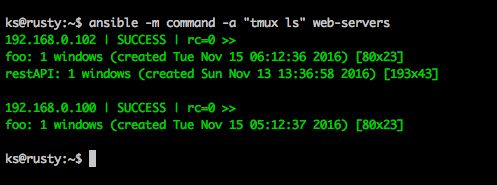Recently I got my hands on a brand new orange pi. However, I found myself stuck in typing the same boring command across all sessions. Hence, I believe this serves as a good opportunity to anisible for better automation across all servers.
Simple walkthrough the steps to install anisible in master server:
First add anisible repository:
sudo apt-add-repository ppa:ansible/ansible -y
Install anisible:
sudo apt-get update && sudo apt-get install ansible -yansible –version
Create ssh key and copy it across all web-servers:
[ Note: username must be same as login username and same across all nodes ]
ssh-copy-id ks@[ first node local ip ]ssh-copy-id ks@[ second node local ip ]
Then you should be able to ssh into all servers using the master ssh public key
If all commands works out well, you can start editing /etc/ansible/hosts file and create your swarm name and local ip.
sudo vim /etc/ansible/hosts
[web-servers]
192.168.0.102 [ first node local ip ]
192.168.0.100 [ second node local ip ]
One of many possible command in ansible
anisible -m command -a ” your-unix-command” [your-serves-group-name]
this command send the same command to all servers
Some Command Example:
ansible -m ping web-serversansible -m command -a “uptime” web-servers
ansible -m command -a “tmux new -s foo -d” web-serversanisible -m command -a “tmux ls” web-servers
Here’s a great proper introduction to ansible by Jeff Geeriling


